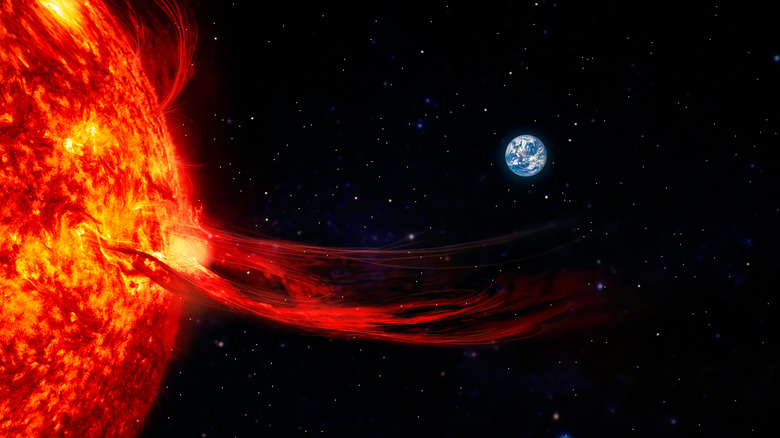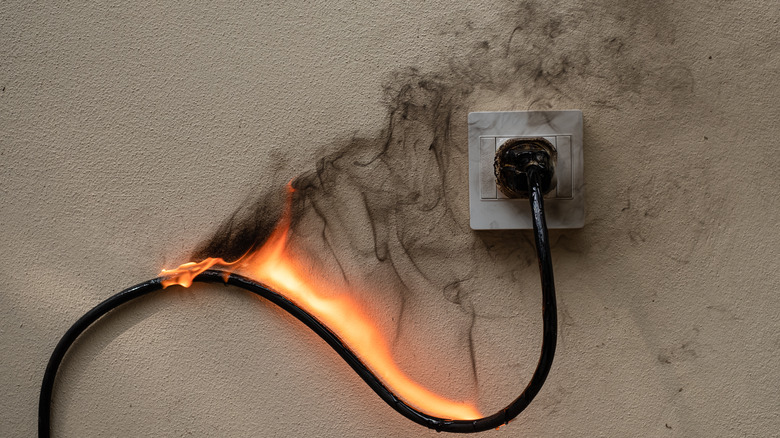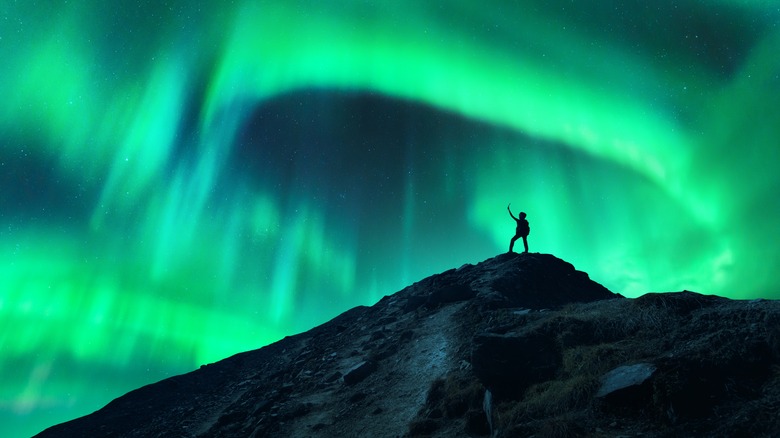How A Carrington Event Level Solar Storm Would Effect Our World Today
Solar storms are powerful disturbances and flares on the surface of the sun caused by the nuclear reactions taking place in its core (via NASA). Most solar storms do not send enough energy to cause issues on Earth. This is because Earth is protected from most radiation thanks to its magnetosphere. According to the National Oceanic and Atmospheric Administration, this layer of the Earth's atmosphere absorbs most of the radiation from space, preventing it from hitting us on the surface. Radiation trapped in the magnetosphere can be seen in beautiful light shows known as auroras at the north and south poles, where these highly energetic particles slam into each other. But what happens when powerful solar storms are sent in the direction of Earth and are too powerful for the magnetosphere to stop?
According to Live Science, the Carrington Event is the largest solar storm that has ever been recorded. It took place in September of 1859 and was recorded by British astronomer Richard Carrington. According to Carrington's documentation, he witnessed a "white light flare" coming from the sun while he was sketching sunspots (via Space.com). The flash blinded him and the entire event lasted around five minutes. While this event was strange enough, what happened a few days later was even more interesting.
The Carrington Event had some strange consequences
The flash that Richard Carrington witnessed while studying the sun's surface is known as a coronal mass ejection, or CME. According to NOAA's Space Weather Prediction Center, coronal mass ejections are large bursts of plasma and magnetic fields expelled from the sun's corona, also referred to as its surface. These CMEs are quick and powerful, traveling at speeds as fast as 1,900 miles per second. While it takes a little more than eight minutes for light from the sun to reach Earth, CMEs can take much longer. Radiation from CMEs can arrive at Earth just 15 hours after they occur, but can take several days to reach us in some cases (via Space.com).
When CMEs like the one Richard Carrington witnessed are extremely powerful, they can cause issues here on the surface of the planet. A few days after Carrington recorded the flash on the sun, several strange things occurred. First, auroras were seen much further away from the poles than they normally were. Even more peculiar, there were multiple reports of sparks flying from telegraph machines, and several telegraph operators reported being shocked from their machines, according to History. Carrington quickly realized these events were most likely caused by the flare he witnessed.
We can predict future Carrington events, but we cannot stop them
If a Carrington-level coronal mass ejection were to take place today, it would affect much more than it did in 1859. Radiation from CMEs primarily affects electronics and radiowaves, according to Space.com. Since we are much more dependent on electricity for our daily lives than people were in 1859, a Carrington-level event could impact us greatly. A study conducted in 2013 found that global blackouts caused by a CME of that size could last for years in some places. Another 2017 study published in Space Weather found that extreme blackouts could affect around 66% of the U.S. population.
Since coronal mass ejections take at least half a day (or longer) to reach Earth, scientists are able to predict when they will arrive. This type of tracking, known as space weather tracking, allows scientists to predict when and where auroras will occur. Not only that, but tracking space weather can help scientists predict if they will interfere with our life here on Earth (via NASA). While we cannot prevent CMEs from hitting us once they are headed towards Earth, we can be prepared for the worst case scenario if one as large as what Carrington witnessed happens in the near future.


